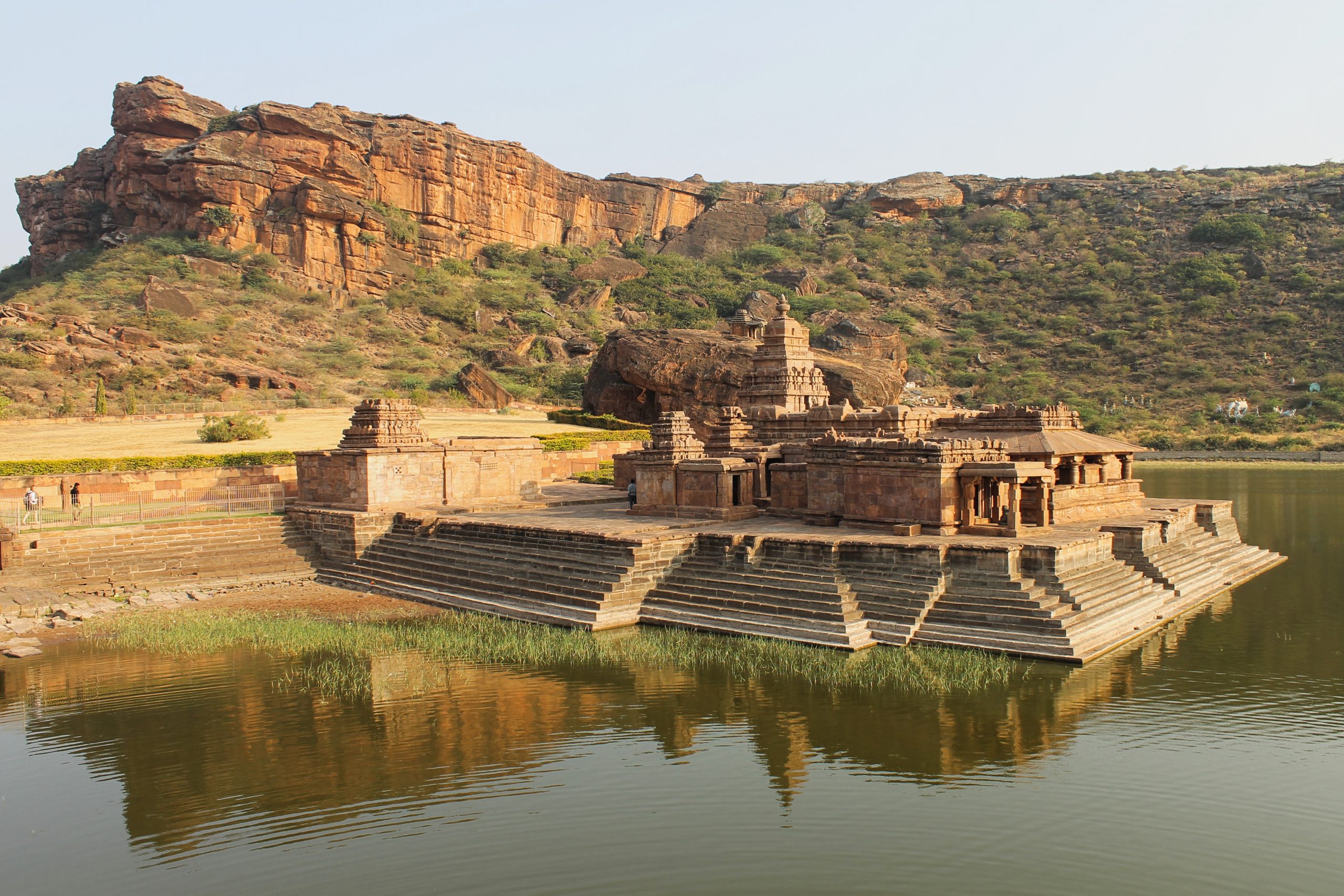The Bhutanatha group of temples is a cluster of sandstone temples located in Badami, Karnataka, India. These ancient structures, dedicated to the deity Bhutanatha, showcase the architectural prowess of the Chalukya dynasty. They sit on the eastern bank of the Agastya lake, reflecting a harmonious blend of Dravidian and Nagara architectural styles. The temples date back to the 7th and 11th centuries, offering a window into the religious and cultural life of the time.
Get your dose of History via Email
Historical Background of The Bhutanatha Group of Temples
The Bhutanatha group of temples was built during the reign of the Chalukyas, who ruled much of central and southern India between the 6th and 12th centuries. The exact discovery date of these temples is unclear, but they have been a subject of interest for historians and archaeologists for many years. The Chalukyas are known for their contribution to temple architecture, and the Bhutanatha temples are a testament to their legacy.
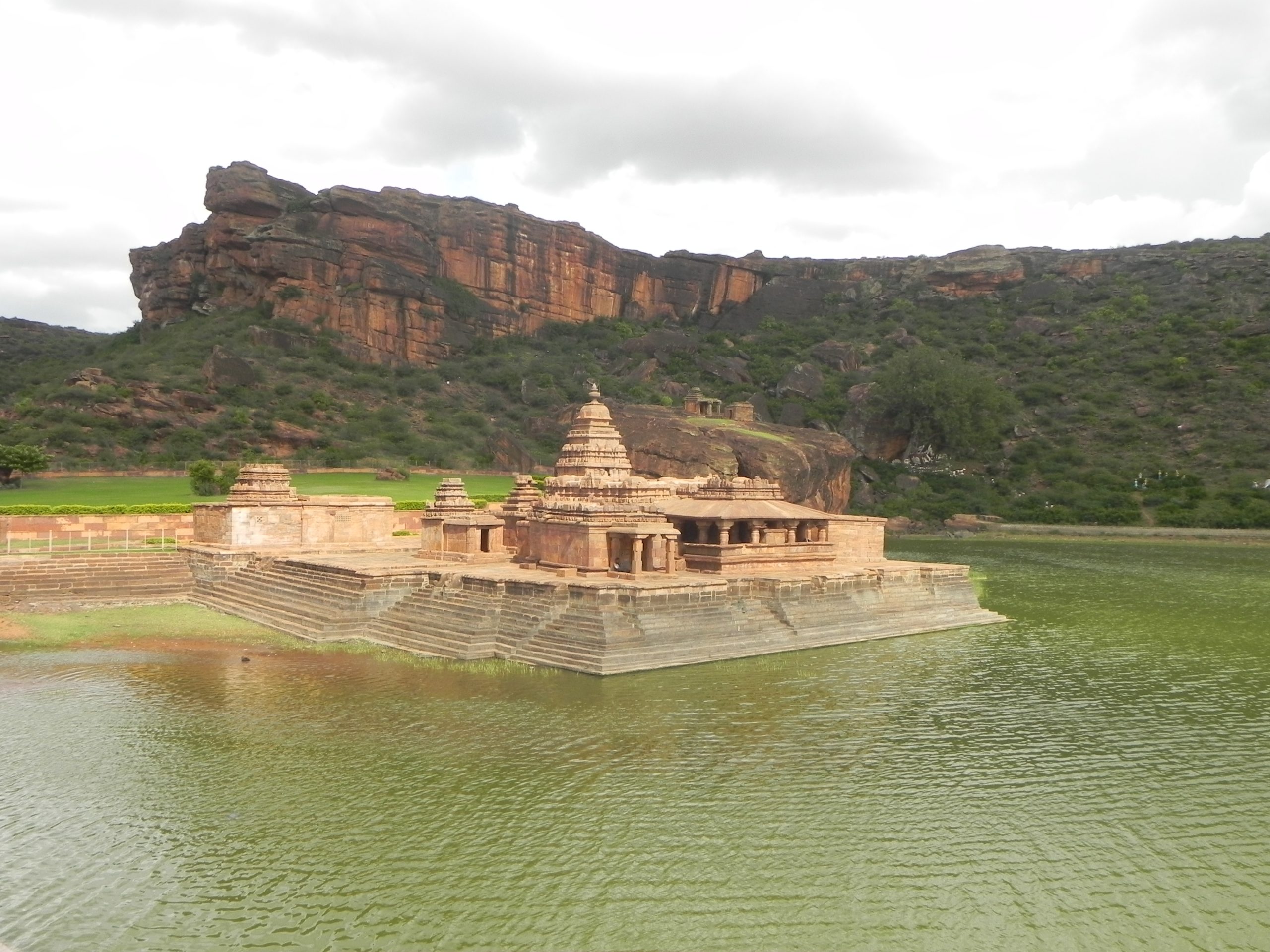
The main temple, which gives the group its name, was constructed in the 7th century. It was later expanded upon in the 11th century, which is evident from the different architectural styles present. The temples have seen various inhabitants and have been part of many historical events, including the rise and fall of empires.
While the Chalukyas were the original builders, the temples have witnessed modifications by later rulers. This includes the Rashtrakutas and the Kalyani Chalukyas, who added their touches to the temple complex. The Bhutanatha temples have stood through time, surviving natural and human-induced changes.
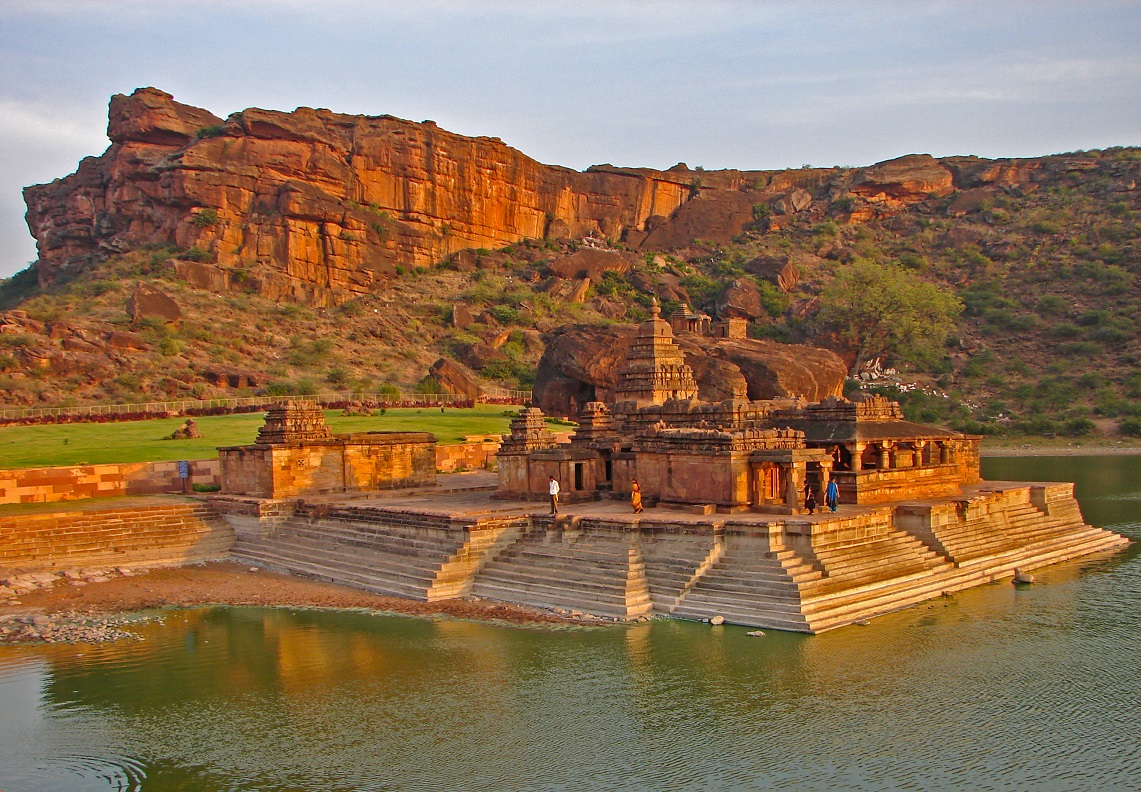
These temples have not been the scene of any major historically recorded events, such as battles or treaties. However, they have been a continuous place of worship and a site of pilgrimage for centuries. Their resilience is a story of historical importance, reflecting the endurance of cultural and religious practices in the region.
The discovery and study of the Bhutanatha group of temples have provided valuable insights into the Chalukyan era. The temples serve as a crucial piece in understanding the architectural evolution that took place in South India during this period. They continue to be a focal point for historical and archaeological studies.
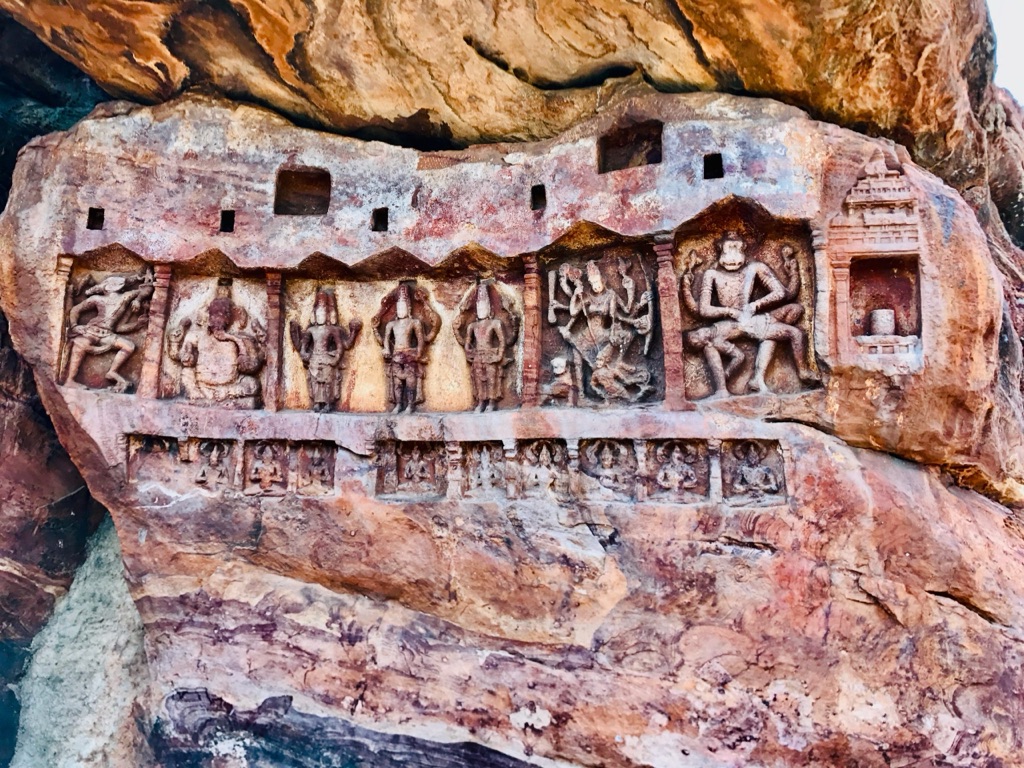
About The Bhutanatha Group of Temples
The Bhutanatha group of temples stands as a remarkable example of early Indian temple architecture. The temples are primarily made of sandstone, a material that was readily available in the region and favored by the Chalukyas for its workability. The main temple, dedicated to Lord Bhutanatha, features a flat-roofed mandapa supported by intricately carved pillars.
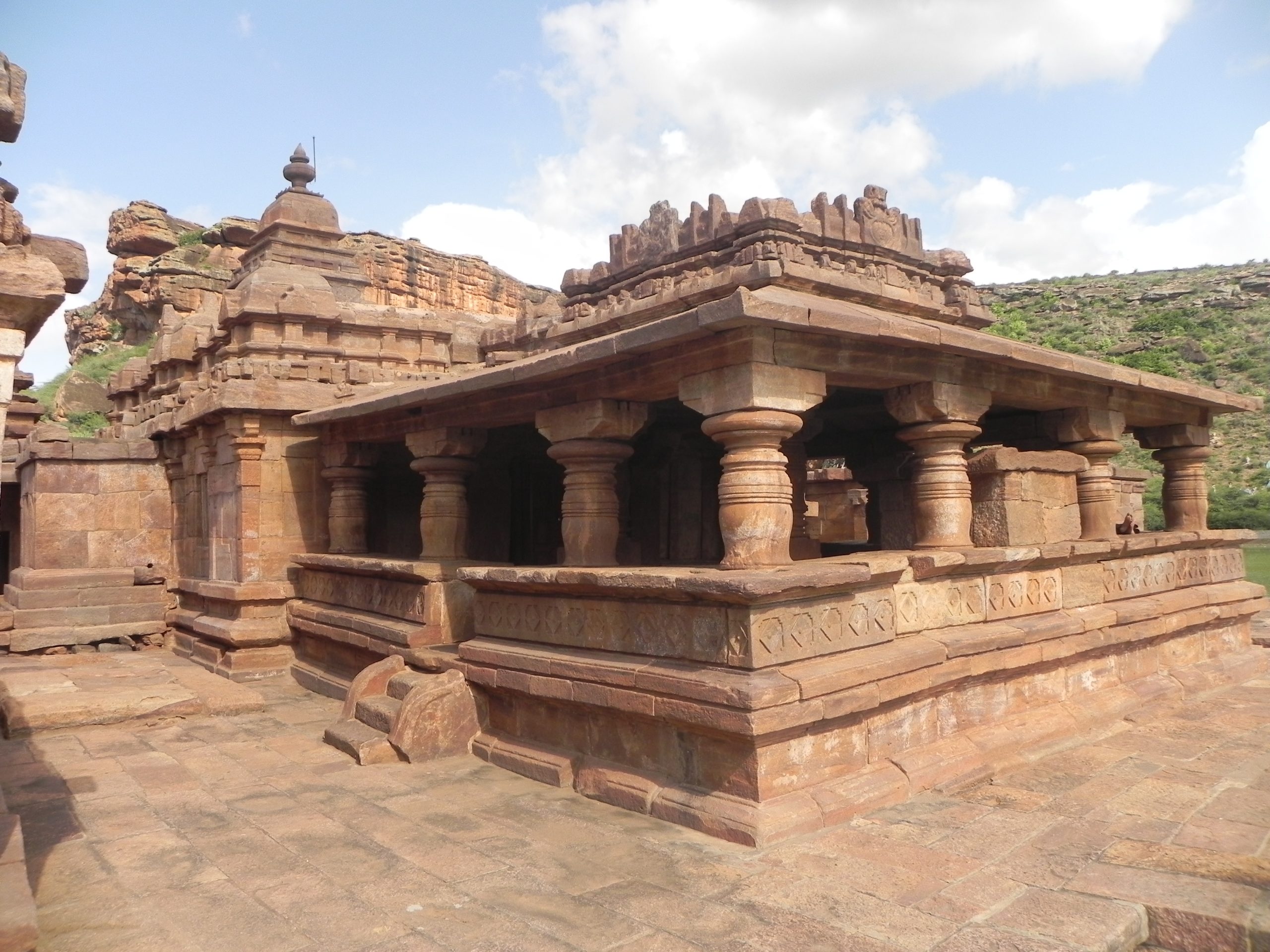
The architectural style of the Bhutanatha temples is a blend of Dravidian and Nagara styles. The Dravidian influence is seen in the tiered, pyramid-like vimana, while the Nagara style is evident in the curvilinear shikhara. This combination of styles creates a unique aesthetic that is characteristic of the Chalukyan era.
One of the most striking features of the Bhutanatha temples is the open verandah that surrounds the main shrine. This verandah, with its carved columns and ceiling panels, offers stunning views of the Agastya lake and the surrounding landscape. The intricate carvings depict various deities, mythological scenes, and floral motifs, showcasing the artisans’ skill.
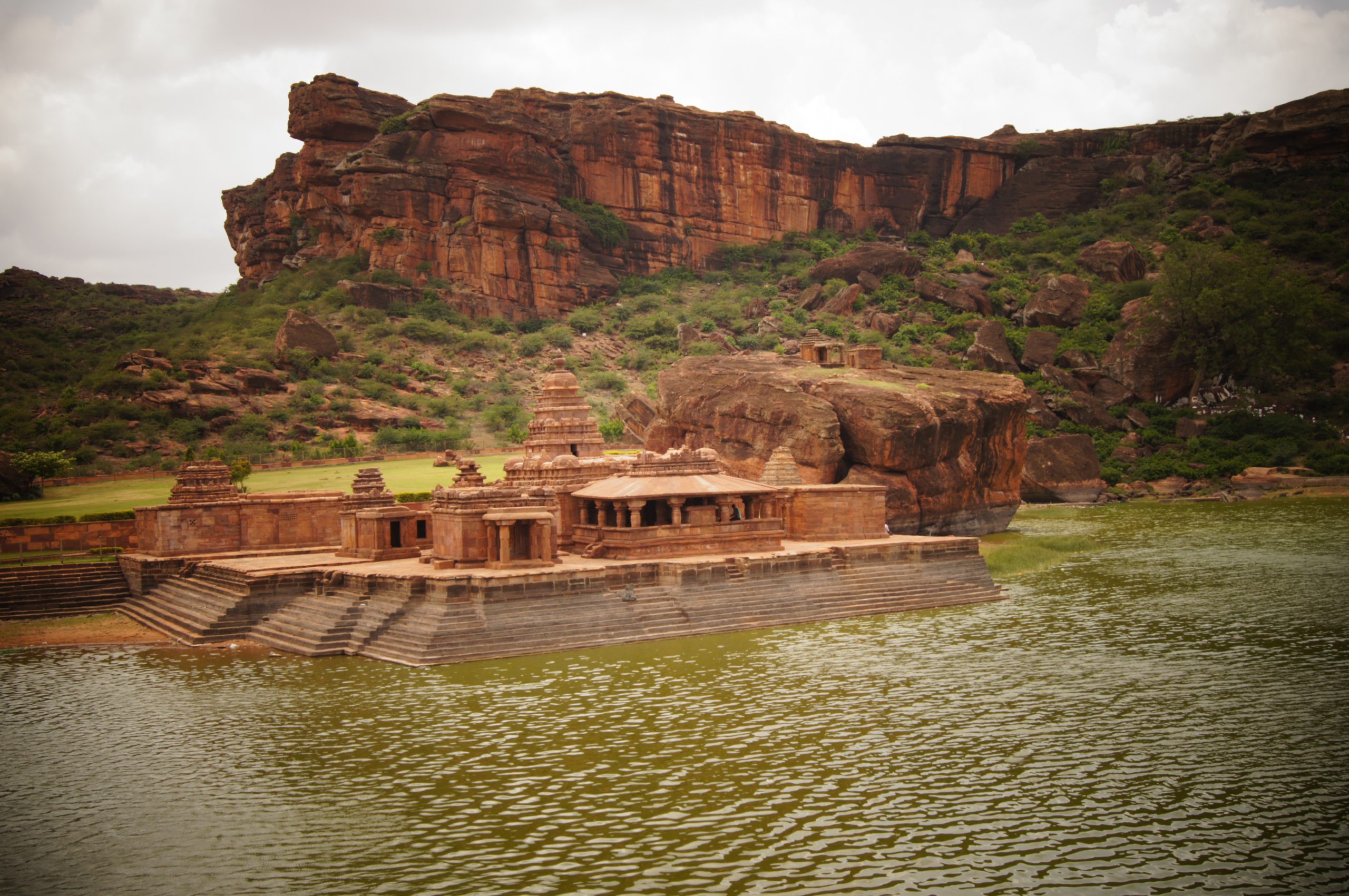
The construction methods of the Chalukyas involved elaborate planning and execution. The builders used interlocking techniques without mortar, relying on the precision of cut stones to create stable and enduring structures. The temples’ endurance over centuries is a testament to the builders’ expertise.
The Bhutanatha group of temples also includes smaller shrines and subsidiary structures, each with its architectural highlights. These include smaller vimanas, additional mandapas, and subsidiary deities, which together form a complex that is both spiritually significant and architecturally impressive.
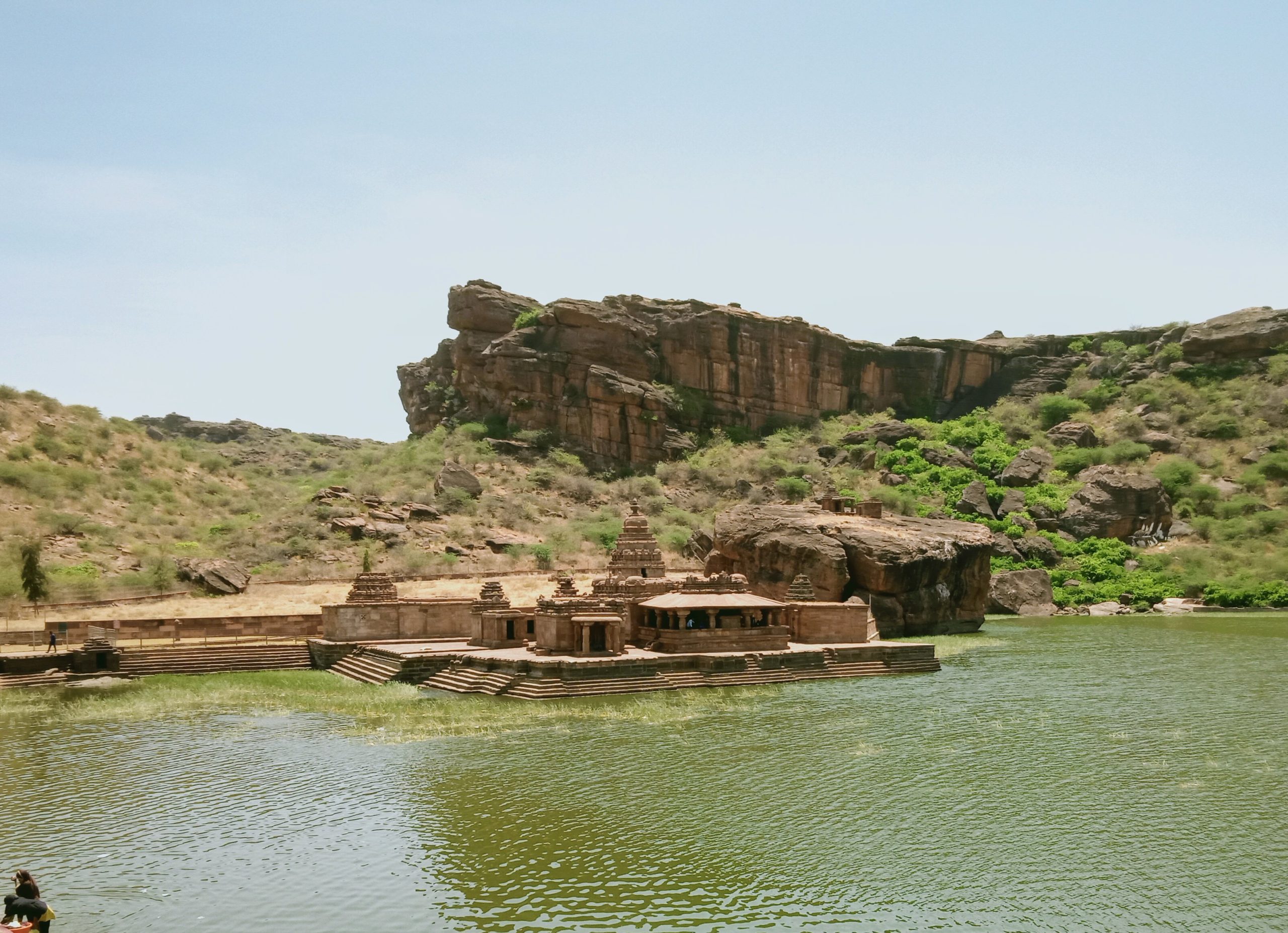
Theories and Interpretations
The primary deity, Bhutanatha, is associated with Lord Shiva, and the temples are thought to have been centers of Shaivism. However, the presence of Jain and Buddhist cave temples nearby suggests a diverse religious landscape.
Some theories propose that the temples served not only as places of worship but also as social and cultural hubs. The location by the lake could have been strategic for gatherings and rituals. The temples’ orientation and design are also thought to align with cosmological beliefs and local geography.
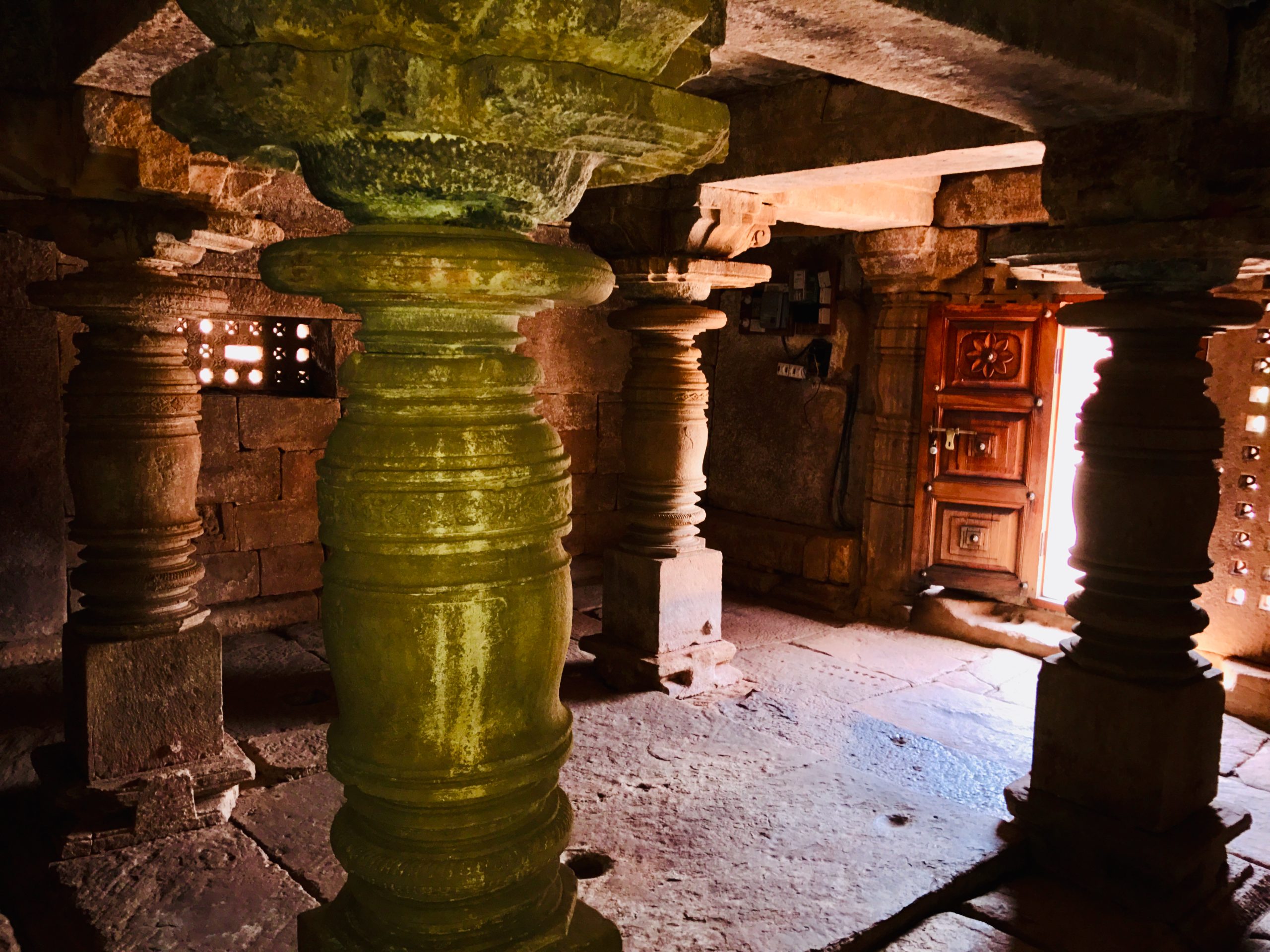
There are mysteries surrounding the iconography and symbolism found in the temple carvings. Some carvings are difficult to interpret and match with historical records, leading to debates among scholars. The blend of architectural styles has also raised questions about the cultural influences and exchanges during the Chalukyan period.
Dating of the temples has been carried out using architectural styles and inscriptions as primary methods. While the exact dates of construction for each structure within the complex are not always clear, the consensus places the original phase in the 7th century, with expansions in the 11th century.
The Bhutanatha group of temples continues to be a site of archaeological interest. Excavations and studies aim to uncover more about the Chalukyan civilization and the role these temples played. The ongoing research contributes to a deeper understanding of the historical and cultural significance of the site.

At a glance
Country: India
Civilization: Chalukya Dynasty
Age: 7th century (original phase), 11th century (expansions)
Conclusion and Sources
Reputable sources used in creating this article:

